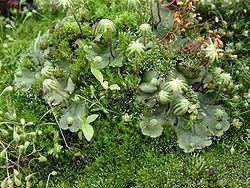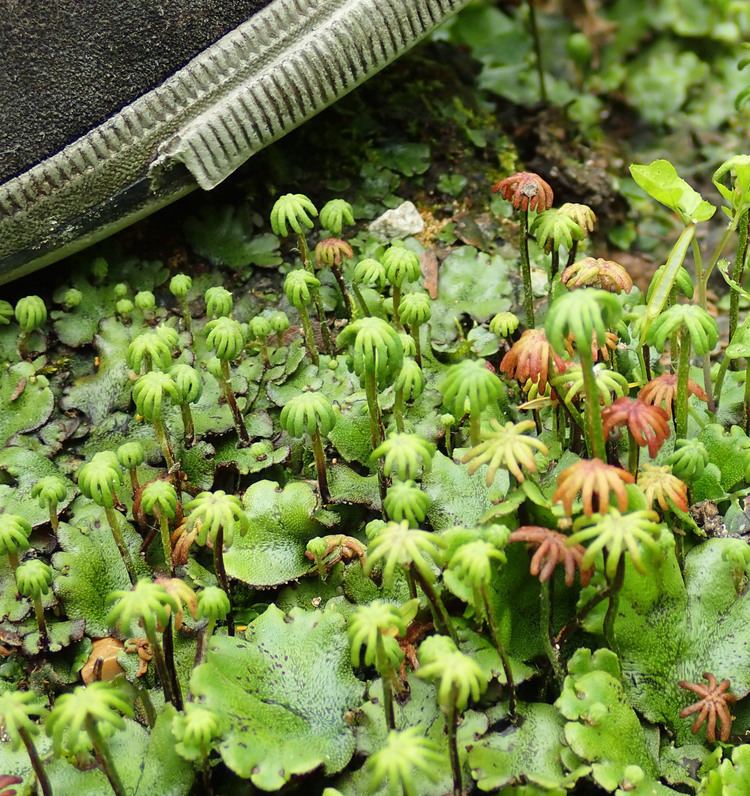Kingdom Plantae Order Marchantiales Scientific name Marchantia | Family Marchantiaceae Higher classification Marchantiaceae | |
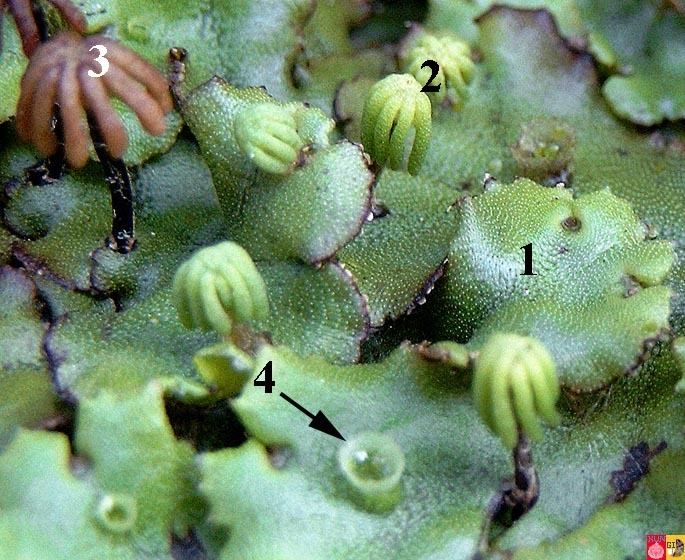 | ||
Similar Marchantia polymorpha, Anthoceros, Hornwort, Polytrichum, Riccia | ||
Marchantia morphology of the thallus
Marchantia is a genus in the family Marchantiaceae of the order Marchantiales, a group of liverworts.
Contents
- Marchantia morphology of the thallus
- Marchantia by dr ruby singh biyani girls college jaipur rajasthan 2014
- Reproduction
- Species
- References
The Marchantia thallus shows differentiation into two layers: an upper photosynthetic or assimilatory region and a lower storage region with a well-defined upper epidermis with air channels (barrel-shaped). The thallus features tiny cup-like structures called gemmae cups, which are used for asexual reproduction. The combination of barrel-shaped pores and gemmae cups are diagnostic of the genus.
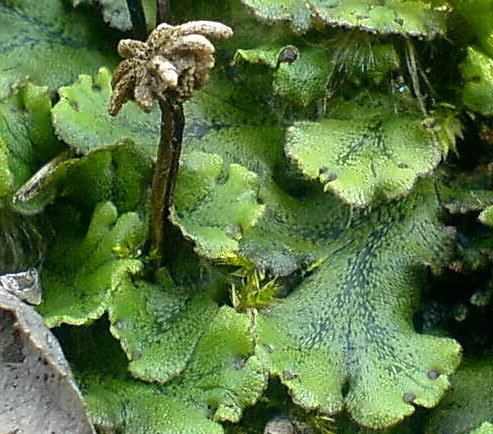
Multicellular purple colored scales and unicellular rhizoids are present on the ventral surface of the thallus.
Marchantia by dr ruby singh biyani girls college jaipur rajasthan 2014
Reproduction
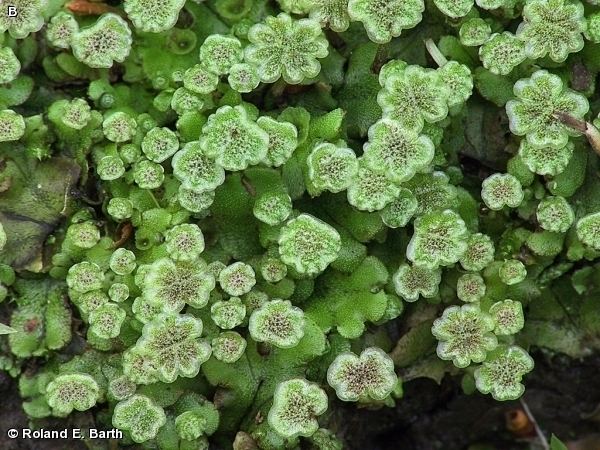
Marchantia can reproduce both sexually and asexually. Sexual reproduction involves sperm from antheridia on the male plant fertilizing an ovum (egg cell) in the archegonium of a female plant. The antheridia and archegonia are borne atop special gametophore stalks called antheridiophores and archegoniophores, respectively. These are borne on separate thalli; hence, the plants are dioicous.

Once fertilized, the ovum is called a zygote and develops into a small sporophyte plant, which remains attached to the larger gametophyte plant. The sporophyte produces spores which develop into free-living male and female gametophyte plants.
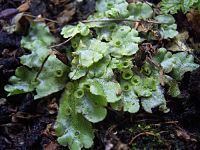
Asexual reproduction occurs by means of gemmae, discoid clumps of cells which are genetically identical to the parent and contained in cup-like structures on the upper surface of the plant. These are dispersed when rain splashes into the cups and develop into new plants. Asexual reproduction can also occur when older parts of the plant die and the surviving newer branches develop into separate plants.
Species
